The Serpae Tetra, scientifically known as Hyphessobrycon eques, is a vibrant and fascinating freshwater fish that belongs to the Characidae family. This species is native to the Amazon River basin in South America, where it inhabits slow-moving streams and tributaries.
Table of Contents
One interesting fact about the Serpae Tetra is that it was first described by Austrian ichthyologist Franz Steindachner in 1882. Since then, it has become a popular choice among aquarium enthusiasts due to its striking appearance and lively personality.
When it comes to their habitat, Serpae Tetras are mid-dwellers, preferring to occupy the middle layers of the water column. They thrive in densely planted aquariums with soft, slightly acidic water and moderate lighting. As omnivores, they have a diverse diet that includes both plant matter and small invertebrates.
Serpae Tetras are known for their vibrant coloration, which can range from deep red to orange-red, with a striking black patch on their dorsal fin. Some variants may also display hints of yellow or gold in their fins. This eye-catching appearance makes them a standout addition to any community tank.
In terms of behavior, Serpae Tetras are generally peaceful but can exhibit occasional aggression towards their own species or similar-looking fish. To minimize this behavior, it is recommended to keep them in schools of at least six individuals. Compatible tank mates include other peaceful, similarly-sized fish such as Corydoras catfish, Harlequin Rasboras, and Neon Tetras.
Fun fact: Did you know that Serpae Tetras are also known as “Jewel Tetras” due to their brilliant, gem-like coloration? They are sure to add a sparkling touch to any well-maintained aquarium.
When setting up a tank for Serpae Tetras, aim for a minimum size of 20 gallons (75 liters) to provide ample swimming space. Maintain a temperature range of 72-79°F (22-26°C) and a pH level between 5.5 and 7.5. Regular water changes and a balanced diet consisting of high-quality flakes, pellets, and occasional live or frozen foods will keep your Serpae Tetras healthy and thriving.
The Serpae Tetra is a captivating and rewarding fish species that can bring both beauty and liveliness to your aquarium. With proper care and attention to their specific needs, these vibrant little gems will continue to shine in the world of fishkeeping for years to come.
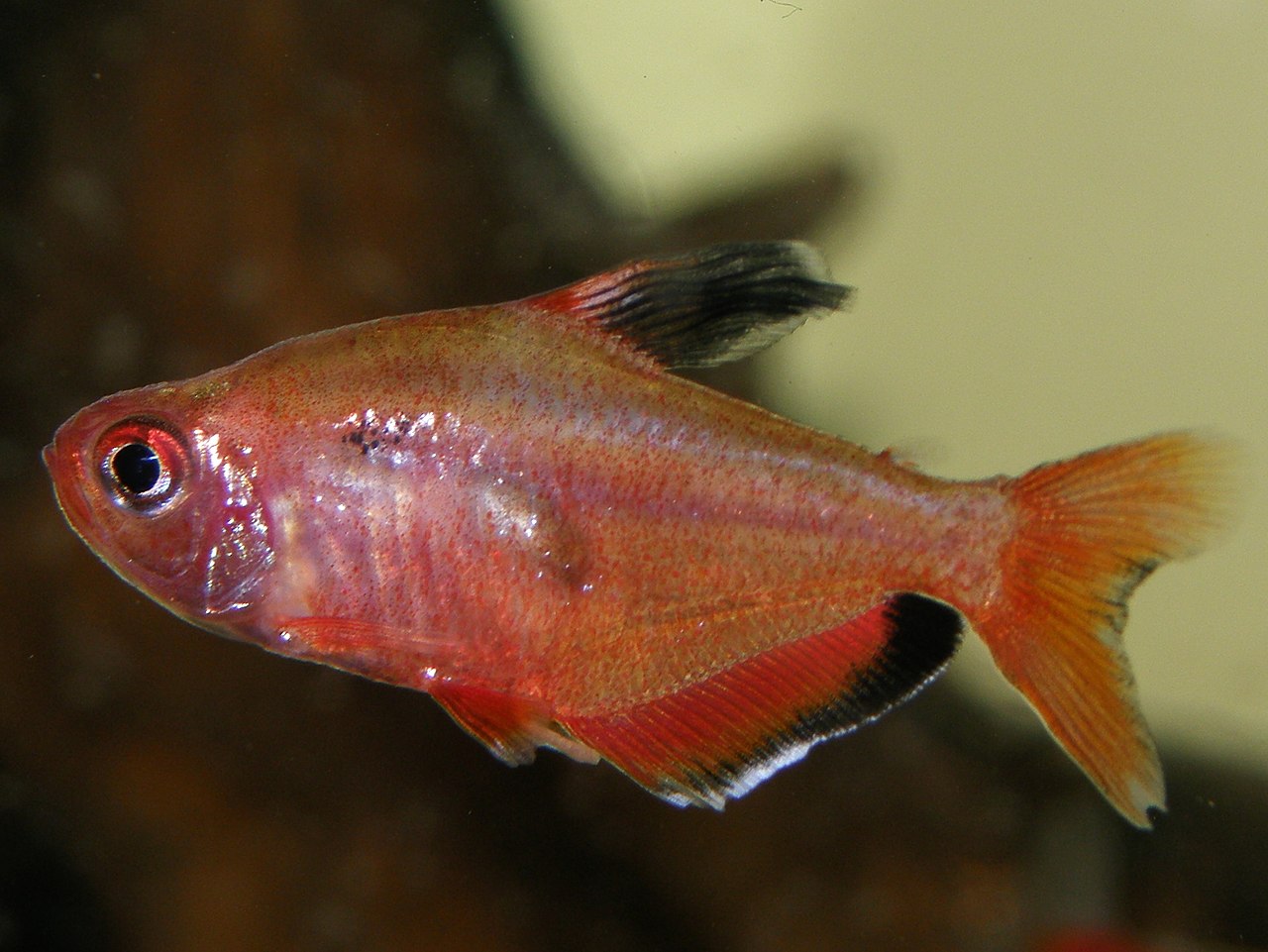
Key Information
Serpae Tetras (Hyphessobrycon eques) are stunning freshwater fish that captivate aquarium enthusiasts with their vibrant coloration. These eye-catching fish display a deep red to orange-red hue, often with a striking black patch on their dorsal fin. Some variants may also showcase hints of yellow or gold in their fins, adding to their visual appeal. The Serpae Tetra’s brilliant colors make them a standout addition to any well-maintained community tank, as they sparkle like jewels amidst the aquatic landscape.
| Family | Characidae |
| Price | $2 to $5 per fish |
| Common Names | Serpae Tetra, Jewel Tetra, Callistus Tetra |
| Variants | Red Serpae Tetra, Long-Finned Serpae Tetra |
| Ideal Tank Size | Minimum 20 gallons (75 liters) |
| Water Parameters | Temperature: 72-79°F (22-26°C), pH: 5.5-7.5, Soft to slightly acidic water |
| Lifespan | 5 to 7 years |
| Full Size | 1.5 to 2 inches (4 to 5 cm) |
| Natural Environment | Amazon River basin in South America, slow-moving streams and tributaries |
| Behavior | Generally peaceful, but can be occasionally aggressive towards their own species or similar-looking fish |
| Habitat Preference | Mid-dwellers, prefer densely planted aquariums with moderate lighting |
| Aquarium Decoration | Densely planted with hiding spots, driftwood, and rocks |
| Ideal Tank Mates | Other peaceful, similarly-sized fish (e.g., Corydoras catfish, Harlequin Rasboras, Neon Tetras) |
| Fish to Avoid | Aggressive or much larger fish that may bully or eat Serpae Tetras |
| Best Foods/Diet | Omnivorous; high-quality flakes, pellets, and occasional live or frozen foods |
| Disease | Susceptible to common freshwater diseases if water quality is poor |
| Sex-Switch | Does not change sex |
| Gender Differences | Males are typically more colorful and slender, while females are larger and have rounder bellies |
| Care Level | Easy to moderate |
| Breeding Level | Moderate; can be bred in home aquariums with proper conditions |
Ideal Tank Mates
When selecting tank mates for Serpae Tetras (Hyphessobrycon eques), it’s essential to choose fish that share similar water parameters, temperament, and size. Serpae Tetras are generally peaceful, but they can occasionally display aggression towards their own species or similar-looking fish. To minimize this behavior and promote a harmonious aquatic environment, it’s best to keep them in schools of at least six individuals.
Ideal tank mates for Serpae Tetras should be non-aggressive, similarly sized, and able to thrive in the same water conditions. These compatible fish can add diversity to your aquarium while ensuring a peaceful coexistence with your Serpae Tetras.
Here are 15 ideal tank mates for Serpae Tetras, along with explanations of why they are compatible:
1. Neon Tetras (Paracheirodon innesi)
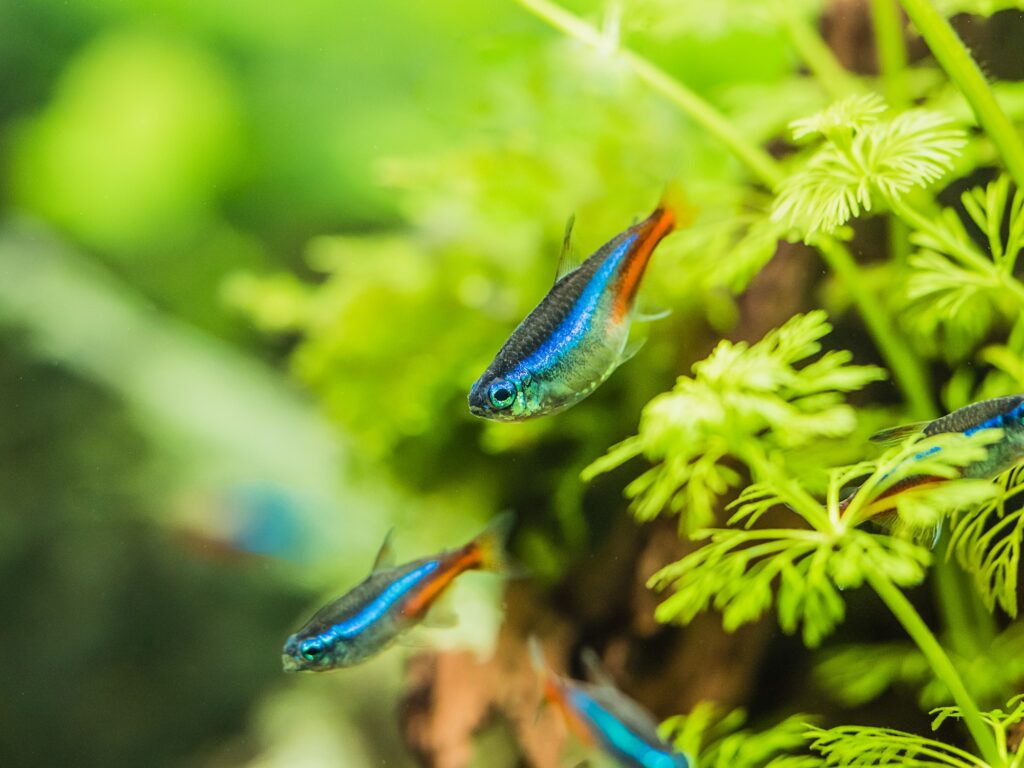
Neon Tetras are small, peaceful fish that share similar water preferences with Serpae Tetras. Their vibrant blue and red coloration complements the Serpae Tetra’s appearance, creating a visually stunning aquarium.
2. Cardinal Tetras (Paracheirodon axelrodi)
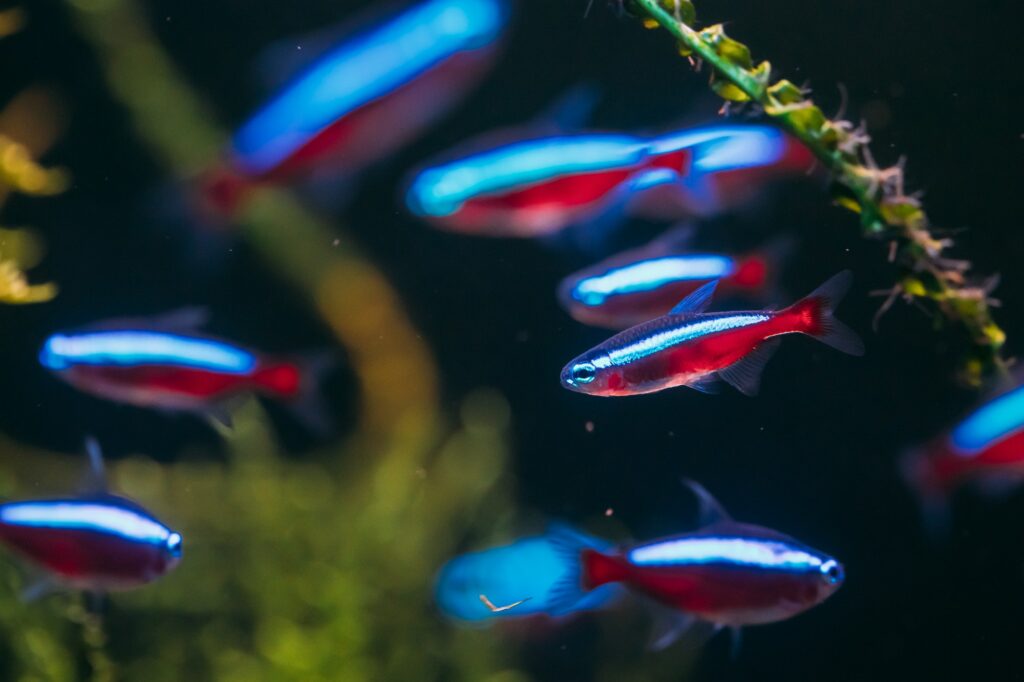
Like Neon Tetras, Cardinal Tetras are peaceful schooling fish that coexist well with Serpae Tetras. Their striking red and blue coloration adds visual interest to the tank without causing any compatibility issues.
3. Rummy Nose Tetras (Hemigrammus rhodostomus)
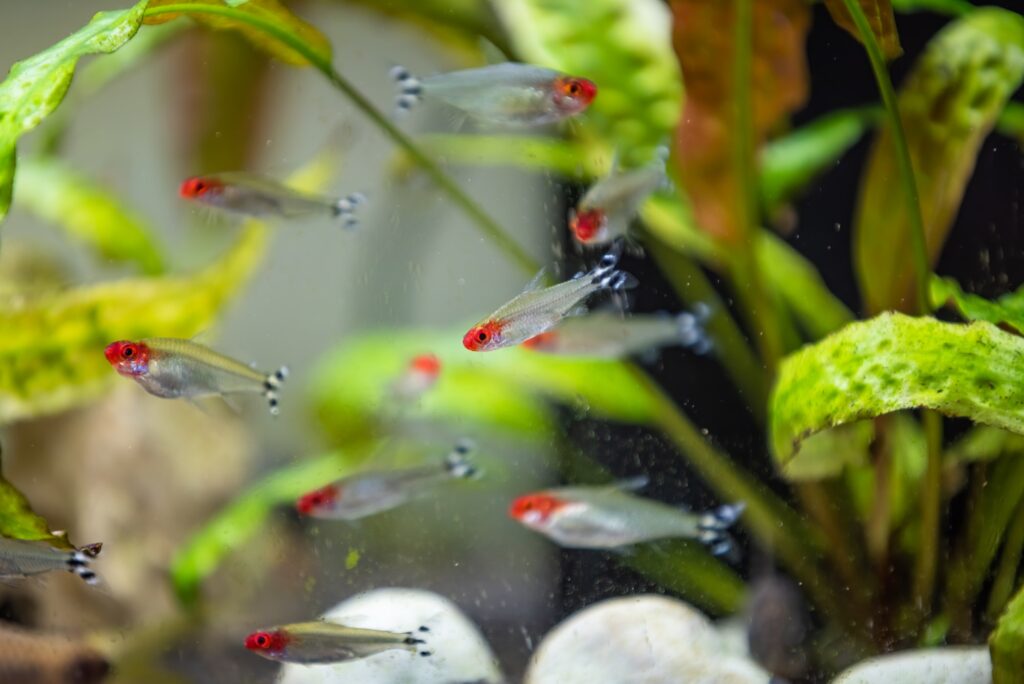
Rummy Nose Tetras are active, peaceful fish that thrive in similar water conditions as Serpae Tetras. Their unique appearance, with a bright red nose and silvery body, adds a touch of diversity to the aquarium.
4. Ember Tetras (Hyphessobrycon amandae)
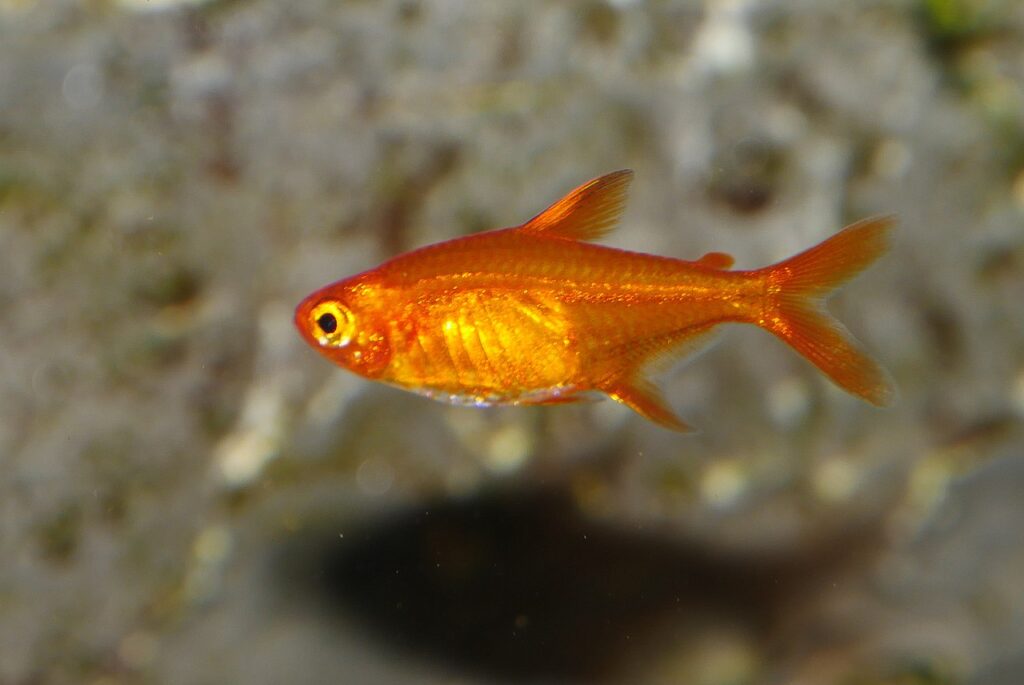
Ember Tetras are small, peaceful fish that share similar water preferences with Serpae Tetras. Their warm orange coloration creates a beautiful contrast against the Serpae Tetra’s deep red hues.
5. Black Neon Tetras (Hyphessobrycon herbertaxelrodi)
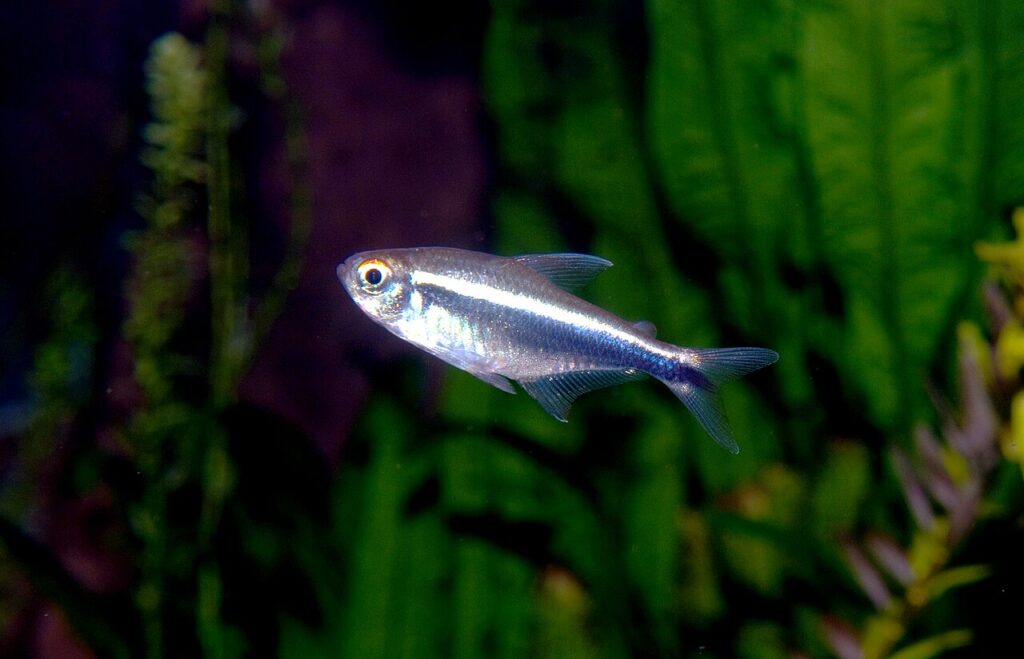
Black Neon Tetras are another peaceful schooling fish that can coexist harmoniously with Serpae Tetras. Their striking black and white coloration adds visual interest to the aquarium.
6. Harlequin Rasboras (Trigonostigma heteromorpha)
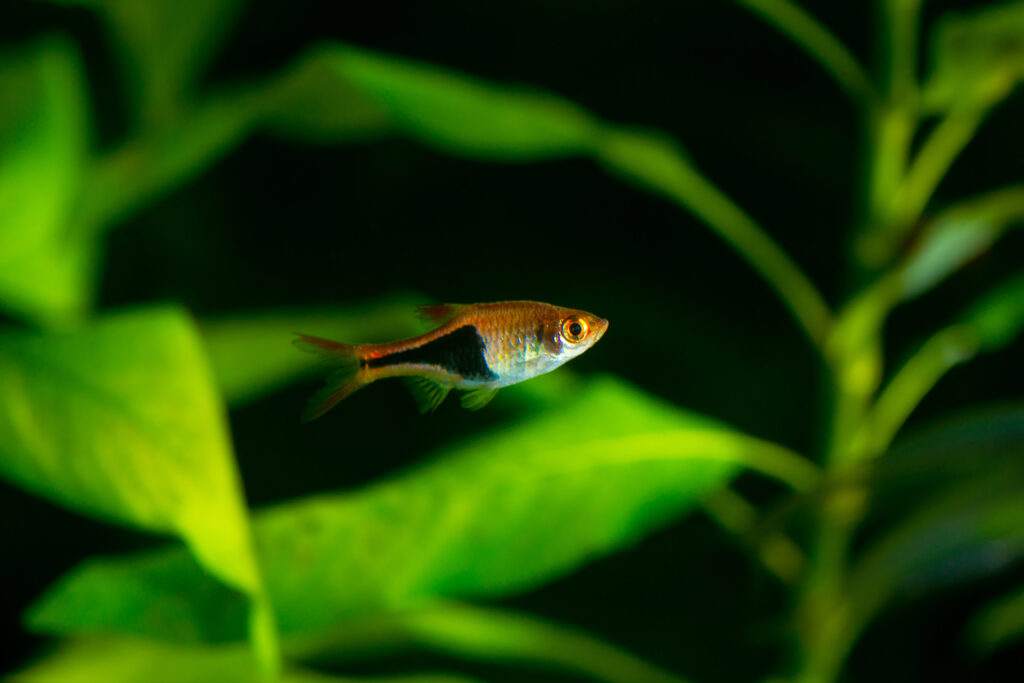
Harlequin Rasboras are peaceful, active fish that thrive in similar water conditions as Serpae Tetras. Their unique triangular shape and vibrant orange and black coloration make them an attractive addition to the tank.
7. Corydoras Catfish (Corydoras spp.)
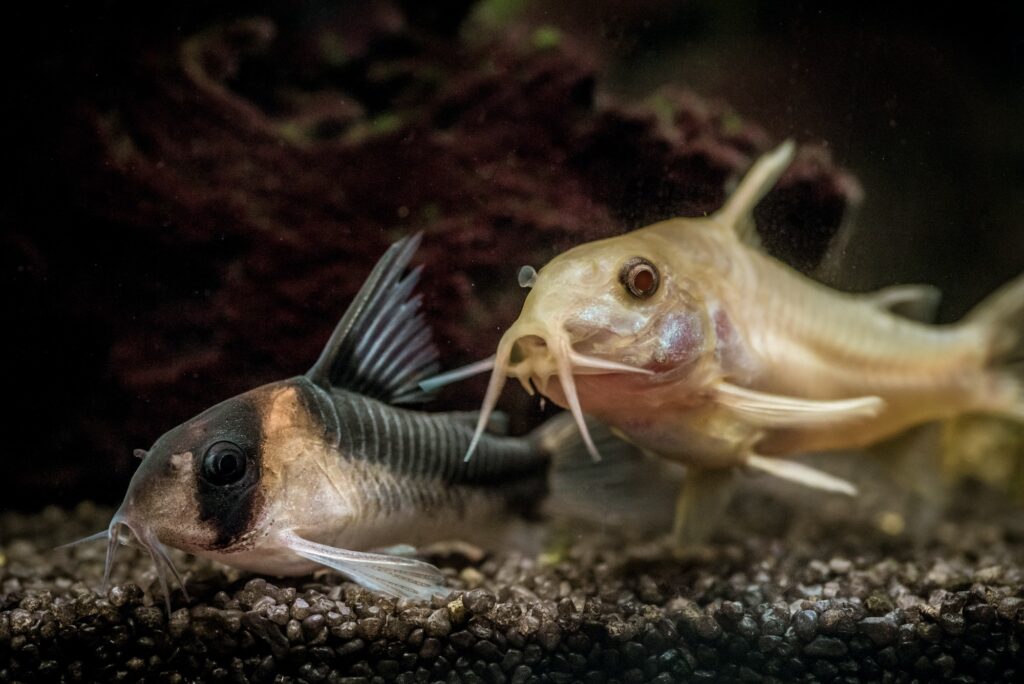
Corydoras Catfish are peaceful bottom-dwellers that help keep the aquarium clean by scavenging for leftover food. They are compatible with Serpae Tetras and add a different level of interest to the tank.
8. Kuhli Loaches (Pangio kuhlii)
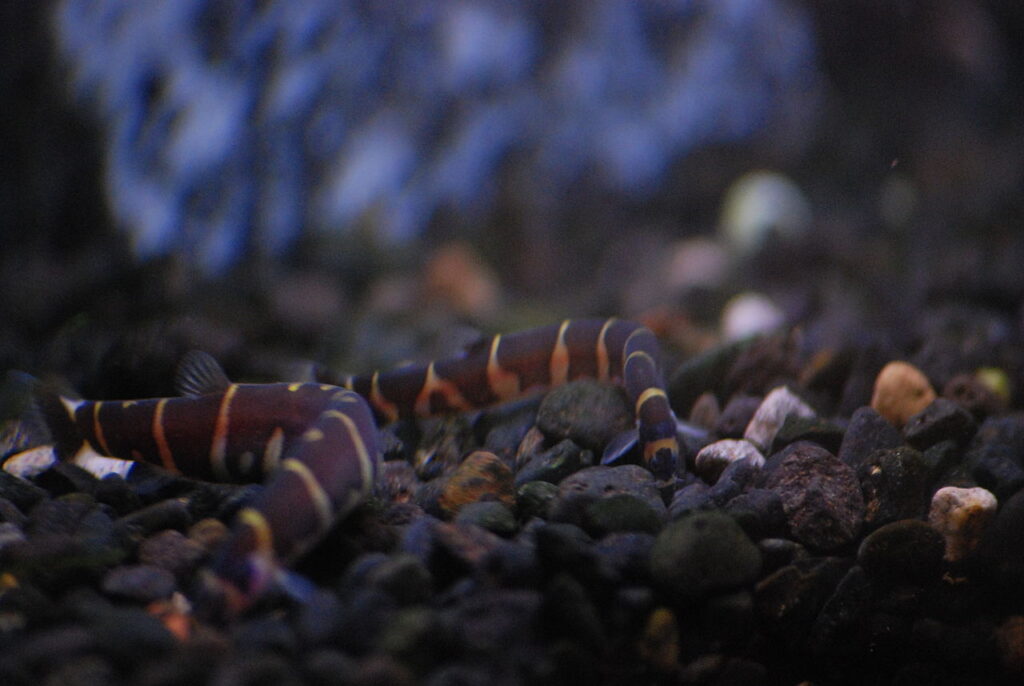
Kuhli Loaches are peaceful, eel-like fish that occupy the bottom of the aquarium. They are nocturnal and can help keep the substrate clean, making them a beneficial addition to a Serpae Tetra tank.
9. Cherry Barbs (Puntius titteya)
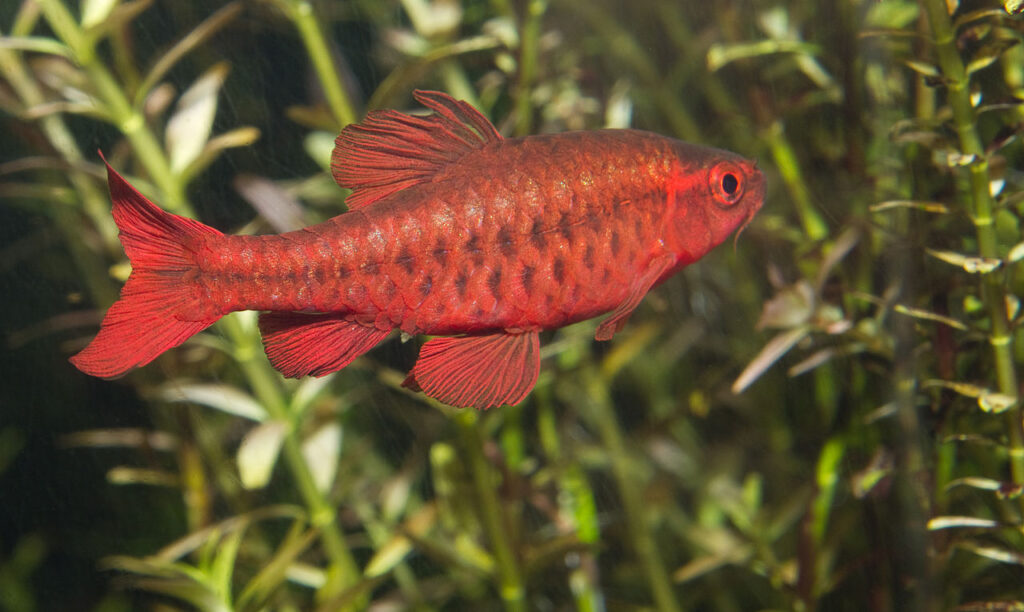
Cherry Barbs are peaceful, active fish that thrive in similar water conditions as Serpae Tetras. Their vibrant red coloration complements the Serpae Tetra’s appearance, creating a visually appealing aquarium.
10. Platies (Xiphophorus maculatus)
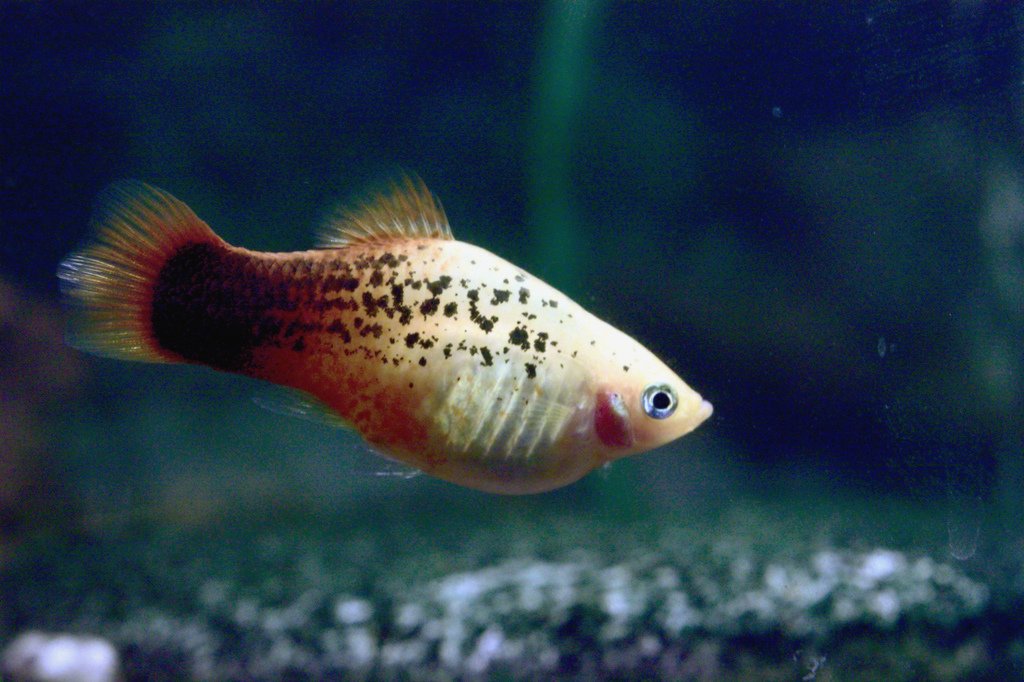
Platies are peaceful, colorful livebearers that can coexist well with Serpae Tetras. They come in a variety of colors and patterns, adding visual diversity to the tank.
11. Guppies (Poecilia reticulata)
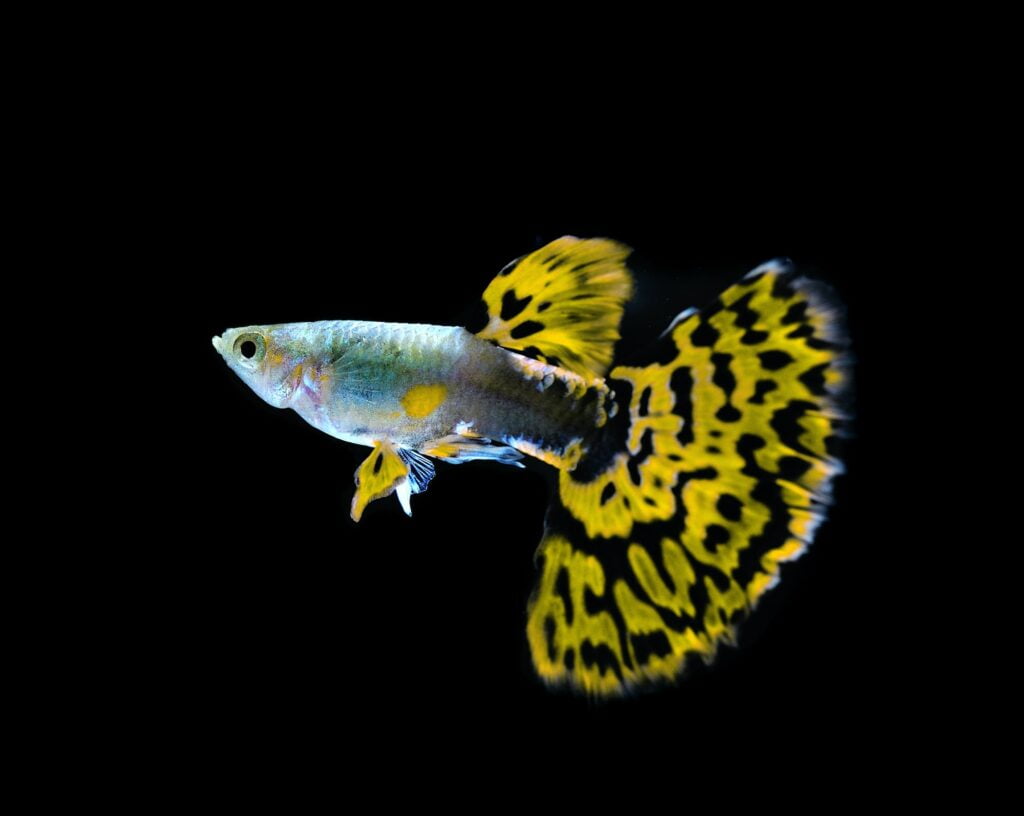
Guppies are another peaceful livebearer that can be kept with Serpae Tetras. Their vibrant colors and active swimming behavior make them an entertaining addition to the aquarium.
12. Bristlenose Plecos (Ancistrus cirrhosus)
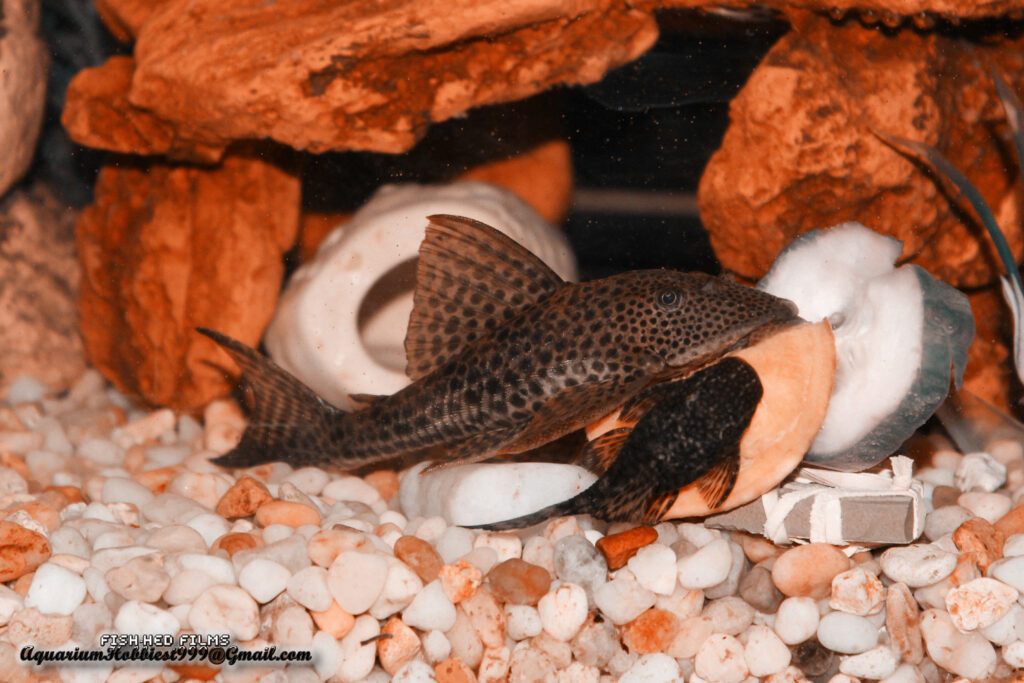
Bristlenose Plecos are peaceful, algae-eating catfish that help keep the aquarium clean. They are compatible with Serpae Tetras and occupy a different area of the tank, minimizing competition for space.
13. Otocinclus Catfish (Otocinclus spp.)
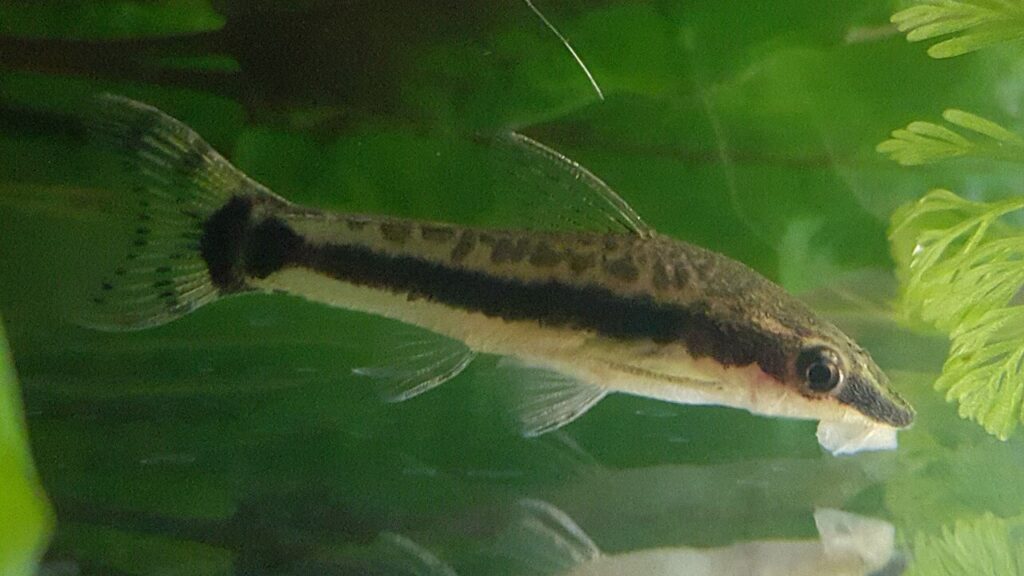
Otocinclus Catfish are small, peaceful algae eaters that can help maintain the cleanliness of the aquarium. They are compatible with Serpae Tetras and add a unique touch to the tank with their adorable appearance.
14. Dwarf Gouramis (Trichogaster lalius)
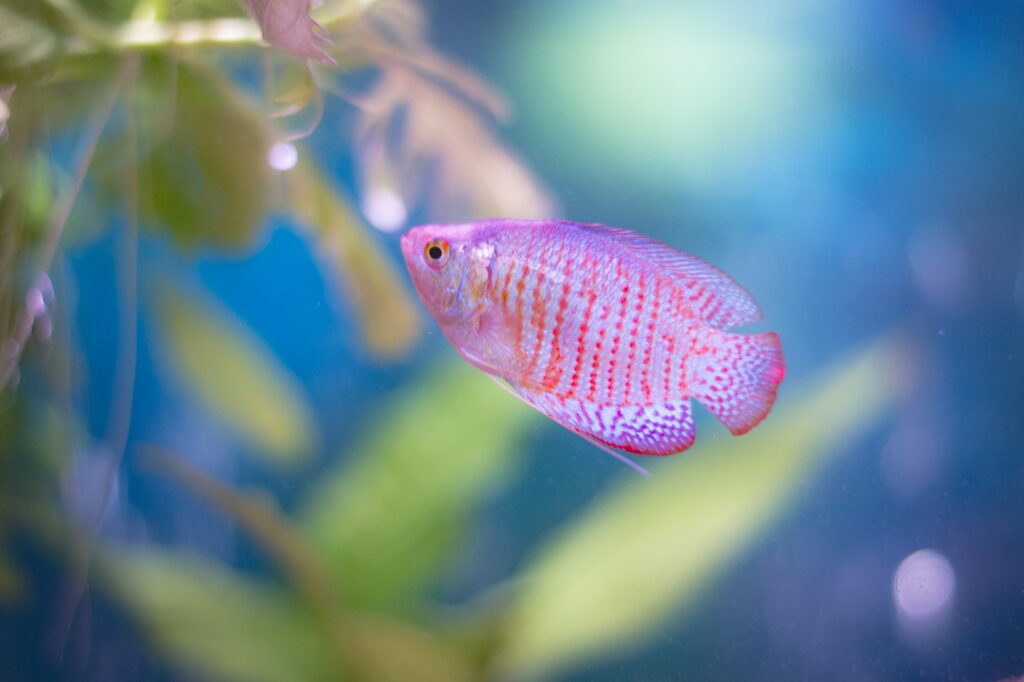
Dwarf Gouramis are peaceful, colorful fish that occupy the upper levels of the aquarium. They are compatible with Serpae Tetras, as long as there is ample space and hiding spots to minimize territorial disputes.
15. White Cloud Mountain Minnows (Tanichthys albonubes)
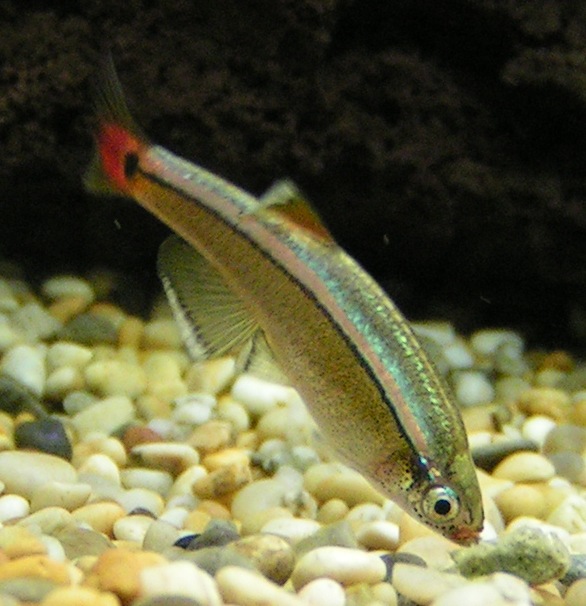
White Cloud Mountain Minnows are peaceful, hardy fish that thrive in similar water conditions as Serpae Tetras. Their silvery bodies and red fins create a stunning contrast against the Serpae Tetra’s vibrant colors.
When introducing any new tank mates, always monitor their behavior closely to ensure a peaceful coexistence. Provide plenty of hiding spots, such as plants and driftwood, to minimize stress and aggression. By selecting compatible tank mates and maintaining proper aquarium conditions, you can create a thriving, visually appealing community tank with Serpae Tetras as the centerpiece.
FAQs
How many Serpae Tetras should I keep in my aquarium?
It’s recommended to keep Serpae Tetras in schools of at least six individuals. This helps minimize aggression and promotes a sense of security among the fish, leading to more natural behavior and a healthier overall environment.
Can Serpae Tetras be kept with shrimp or snails?
Serpae Tetras are generally peaceful towards shrimp and snails, making them suitable tank mates. However, it’s essential to provide plenty of hiding spots for the shrimp and snails to minimize stress and ensure their safety.
Are Serpae Tetras prone to jumping out of the aquarium?
Like many other tetra species, Serpae Tetras are known to be jumpers. To prevent them from jumping out of the tank, make sure to keep a secure, well-fitting lid on your aquarium at all times.
How often should I feed my Serpae Tetras?
Feed your Serpae Tetras small amounts of food two to three times a day. Offer a varied diet consisting of high-quality flakes, pellets, and occasional live or frozen foods to ensure they receive all the necessary nutrients.
Can Serpae Tetras be kept in a planted aquarium?
Yes, Serpae Tetras are well-suited for planted aquariums. They appreciate the natural hiding spots and shade provided by aquatic plants, which can help reduce stress and promote a more natural environment.
How often should I perform water changes in a Serpae Tetra tank?
Perform weekly water changes of around 10-20% of the tank volume to maintain good water quality. Be sure to use a gravel vacuum to remove debris and waste from the substrate during water changes.
Can Serpae Tetras be kept in a community tank with larger fish?
It’s best to avoid keeping Serpae Tetras with much larger or aggressive fish that may bully or attempt to eat them. Stick to similarly-sized, peaceful tank mates to ensure a harmonious community aquarium.
Are Serpae Tetras sensitive to changes in water parameters?
Like most fish, Serpae Tetras can be sensitive to sudden changes in water parameters. Always acclimate them properly when introducing them to a new tank, and be sure to maintain stable water conditions through regular testing and maintenance.
How can I tell if my Serpae Tetras are healthy?
Healthy Serpae Tetras should have vibrant colors, clear eyes, and no visible signs of disease or injury. They should be active swimmers with good appetites and display normal schooling behavior.
Can Serpae Tetras be bred in a home aquarium?
Yes, Serpae Tetras can be bred in a home aquarium with the proper conditions. Provide a separate breeding tank with slightly acidic, soft water and plenty of fine-leaved plants for the eggs to adhere to. Condition the breeding pair with high-quality, protein-rich foods to encourage spawning.